As we’ve all come to discover over the last few months, retreating into the solitude of nature is a wonderful escape from the chaos of the world. Now that you’re hooked, this may be the summer to discover – or perhaps rediscover – the joys of camping out and cooking over an open fire.
Camping! With each breath of fresh air, life instantly slows down. I can also guarantee that with each inhalation, your hunger pangs will go into overdrive! Fresh air will do that.
The good news is that with a little foresight and nominal effort, you can upgrade hot dogs and baked beans for seriously good eating. What follows are my strategies for planning – and enjoying – a weekend in the woods.
Do Your Homework
Whether you’re taking a cross-country trip or heading for the wilds of Pennsylvania for the weekend, you’ll need to do some homework. For PA, you could start with the Where and When Pennsylvania Travel Guide (whereandwhen.com), which provides a nice list of campgrounds across the state.
For information about camping facilities in our National Park system, visit the National Park Service’s website at nps.gov.
State parks take reservations online, often through Reserve America (reserveamerica.com) or their corresponding smart app.
Some parks offer drive-up registration when available. Keep in mind most have gates that close at a designated hour, so call ahead to learn if there is a security code available to registered campers.
Check to see if there is a drought or any other temporary restrictions to be aware of. Help keep pests and diseases from spreading by sourcing firewood locally to where you’ll be camping. Residents and convenience stores near campgrounds know their market and often sell firewood – just make sure it’s seasoned and you have the means of cutting it with a hatchet for kindling.
Car Camping
When I think about what camping entails for most people, it probably looks like “car camping” – loading the car, driving to a designated spot and setting up camp. On two separate occasions, Jessica and I have road-tripped to New Orleans, camping at state parks along the way. In my opinion, car camping provides one of the best ways to experience the country.
Those endurance road trips became educational experiences and have helped to make camping near home a breeze. Well, that’s mostly true with one exception: weekend getaways are instances where I’m less inclined to buy any forgotten items or cooking ingredients left at home. Remembering a kettle or an oven mitt, for instance, will save you from cutting empty soda cans with a pocket knife to boil water for tea aided by a pair of pliers.
My cooking-while-camping philosophy is as follows. I want to relax, not look up recipes on my phone. I want to eat well, but with minimal food prep and cleanup. I don’t want to venture into a grocery store once I get there. What and how I cook will be weather dependent; in a drought or rain, a propane stove may be necessary, so I like to have options when it comes to heat sources.
Before packing the car to head out into the wilderness, I outline a list of meals and the groceries and utensils that will be needed to cook them.
Prep For Fun
Prepping ingredients before leaving not only makes for an easier job (and better meals) while camping, but it will help you make the most of your precious time. Time is everything on a trip, the culmination of planning. I learned long ago to shop the perimeter of grocery stores, prioritizing fresh food, and I maintain that perspective when shopping for camping supplies and planning menus.
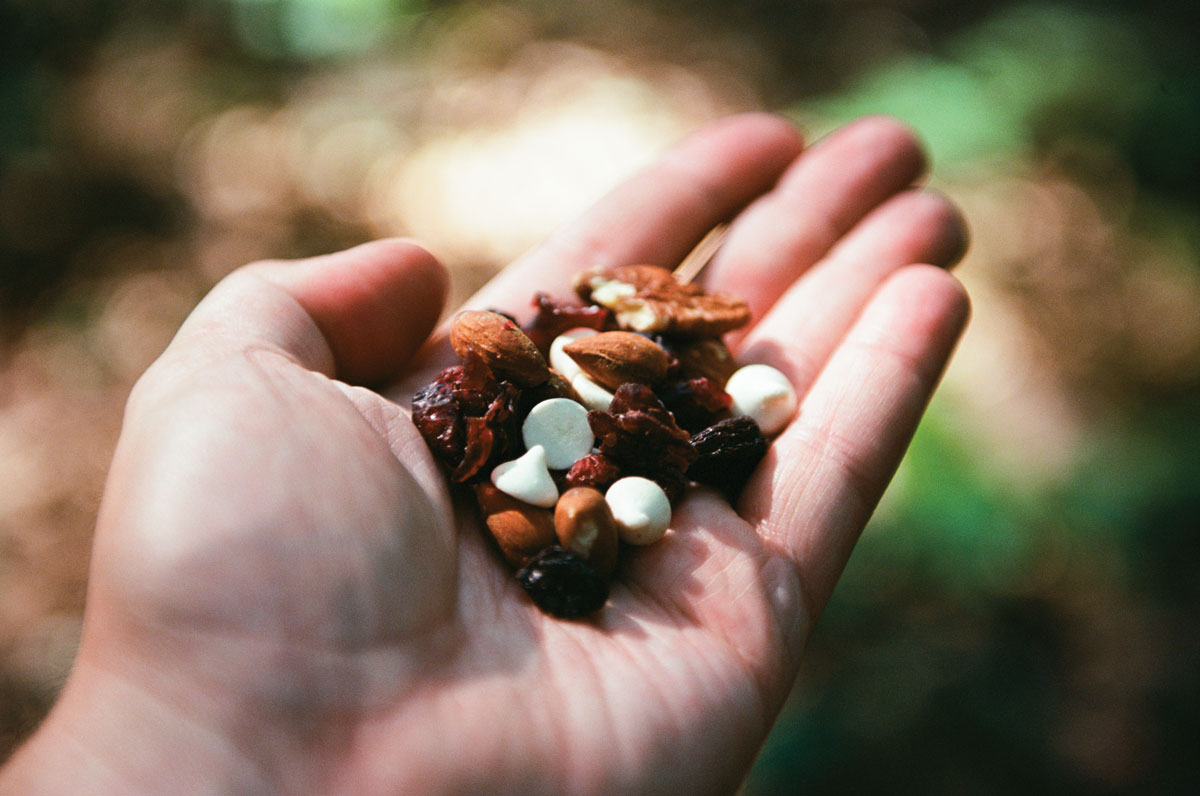
My favorite trail mix: white confectionery drops, dried cranberries, flame raisins, raw pecans, roasted almonds, roasted cashews and raw walnuts.
Chopping fresh fruit and vegetables ahead of a weekend trip makes for tasty skewers, toppings and even appetizers before dinner. Measuring out dry ingredients in jars or storage containers (being sure you have a little extra) reduces your travel footprint. Raw shrimp (frozen, deveined and peeled) paired with sliced peppers, mangos and onions yields hassle-free and delicious kebabs finished over a fire. Marinate chicken or pork after trimming, store it in a sealed container and it’s ready to go on a hot, oiled skillet. Fresh herbs take up almost no room and bring quality to a meal not traditionally seen at a campsite. Sliced cantaloupe with prosciutto, balsamic or ground pepper is a refreshing treat. Sliced and pre-cooked onions or mushrooms offer utility in omelets, on burgers or in a side dish.
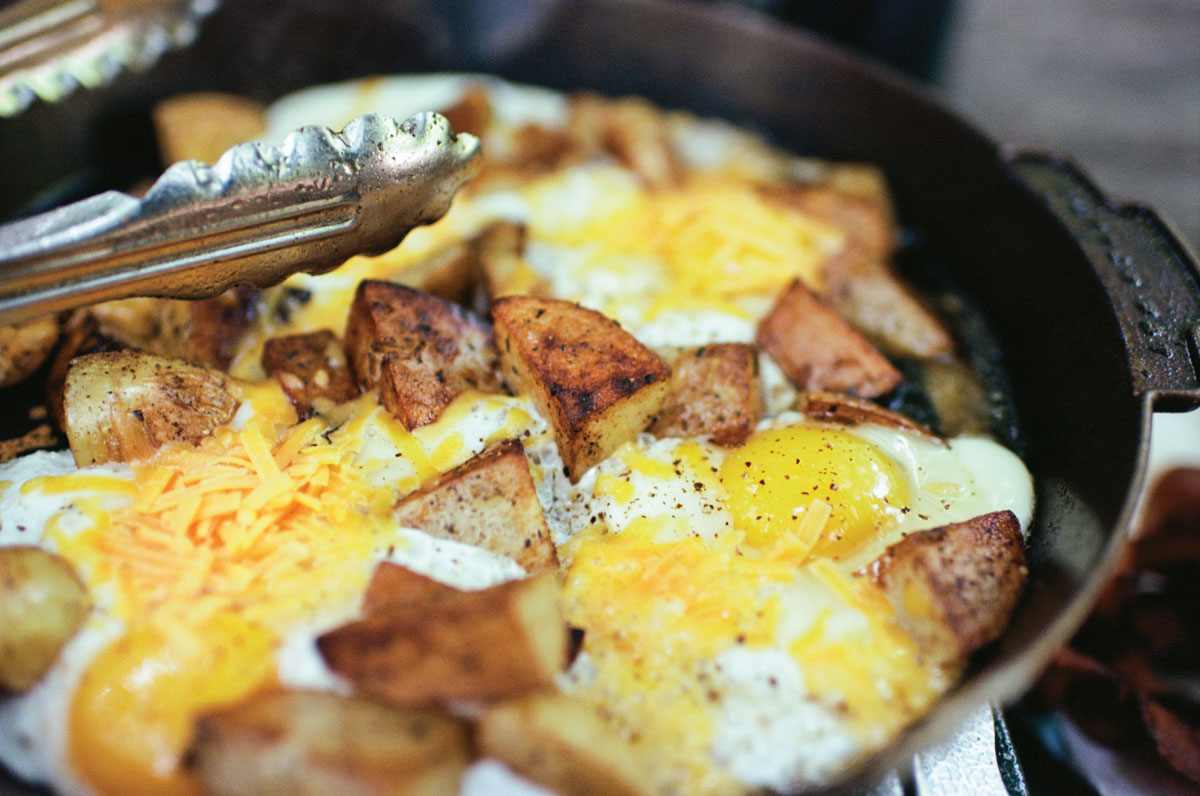
Breakfast! Roasted potatoes, brown eggs over-easy and sharp cheddar cheese cook on a cast-iron skillet.
Cast Iron Skillets & Mountain Pie Makers
Cast iron skillets are ideal when car camping. It’s no secret they’re my favorite cookware and they shine over a campfire. Little fuss, no need for a real serious cleaning after a meal, and they can take the heat. Just remember to bring a hot pad or two. Lemon and lime add dimension while the peels can be tossed into the fire afterward without concern.
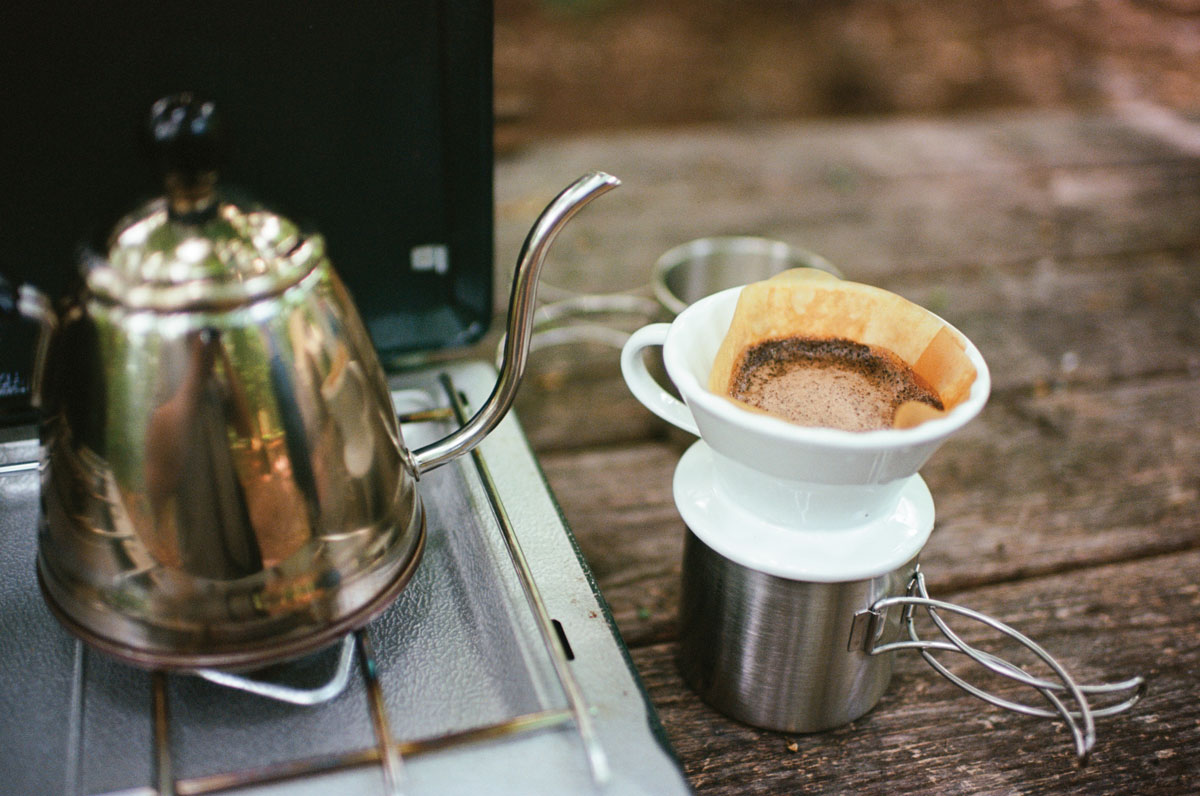
A single-serve pour-over coffee maker makes for easy cleanup. Water is heated in a Japanese-style kettle over a Coleman propane stove.
Bear in mind that hardwood burns much hotter than coals or a propane stove, so if you have a well-seasoned heirloom skillet, consider leaving it at home. Too much heat can burn off the polymerized oils on a cherished skillet. An inexpensive, factory-seasoned skillet is perfect for the task.
Mountain pies offer simple yet still delicious solutions for hot meals and desserts. Pepperoni, marinara and mozzarella with a dash of fresh basil make for a pizza turnover, while Swiss cheese, ham and tuna add up to a tuna melt. Whether it’s cheddar, broccoli and ham or Nutella, peanut butter, chocolate and marshmallows, there are no wrong choices.
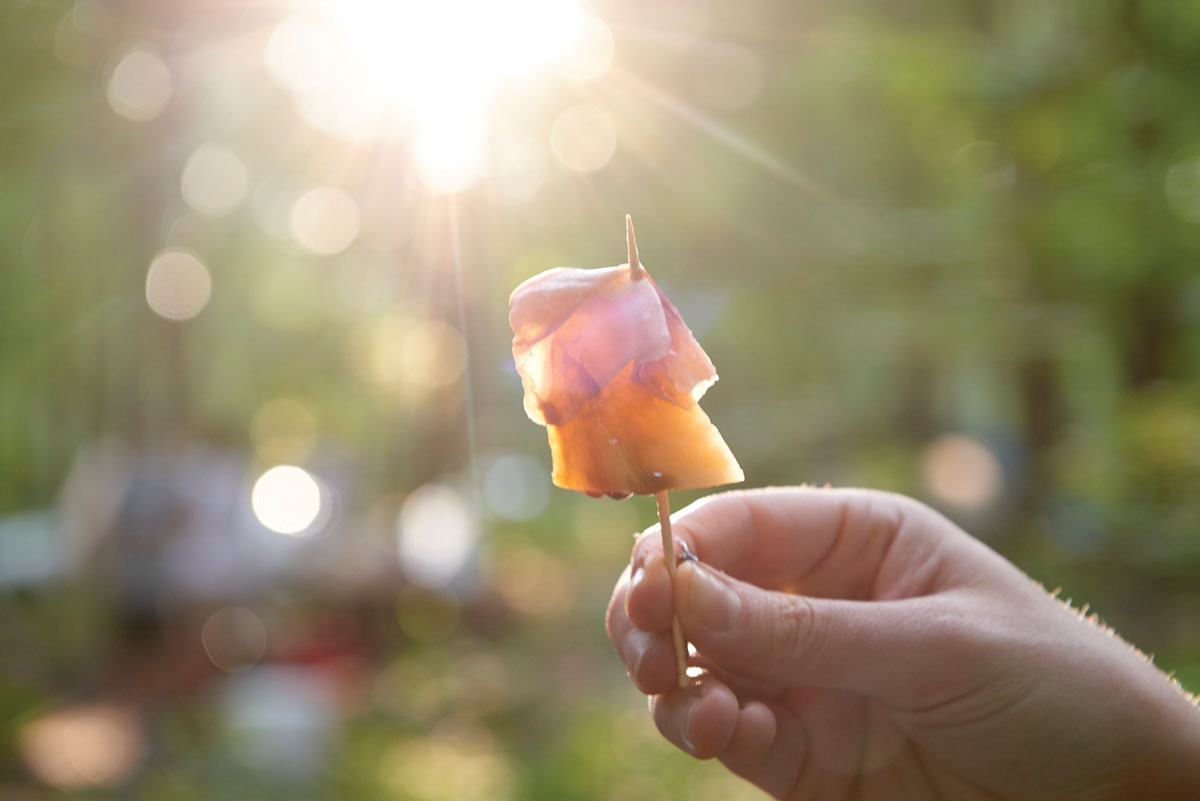
Sliced cantaloupe with proscuitto and balsamic make for a refreshing treat and can be largely prepared in advance.
Keep It Cool
Food safety is important. Store coolers in a shaded space inaccessible from animals. I prefer the hatchback of a vehicle backed up to a shaded campsite for quick access, but try not to keep it open for long in order to preserve the battery.
Freezing water bottles or gallon jugs will keep a cooler from filling up with water, plus provide chilled drinking water after a hot afternoon hike. Make sure meat and cold-stored foods are in sealed containers and maintained at temperatures below 40 degrees Fahrenheit.
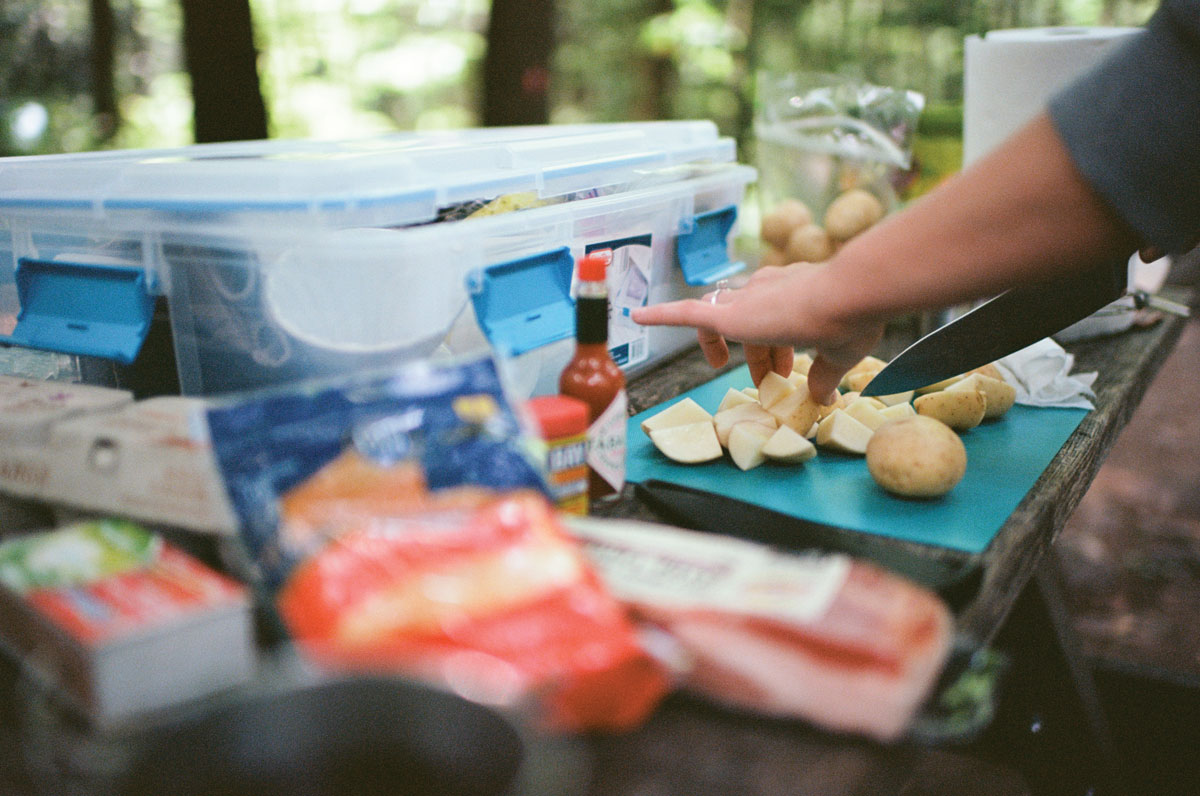
A large plastic storage bin is ideal for keeping cooking staples accessible, easily covered and safe.
Behold, The Plastic Storage Bin
The most underrated device for camping is the plastic storage bin. Living on a picnic table, it’s perfect for organizing all of the necessities and niceties for campsite cooking. In the container: matches, paper towels, paper plates, sanitizing and wet wipes, sheathed knives, a cutting board, tea bags, tinfoil, a can opener, metal tongs (which fit perfectly in the center of the paper towel roll), salt, pepper, Old Bay seasoning, Tabasco, olive oil, trash bags, spatula, utensils, meat thermometer, hot pads, towel, dish soap, scouring pad, skewers, toothpicks, ground coffee and filters.
A lidded bin allows all of your supplies to be quickly covered in the event of rain or safely stored away at the end of the day.
On Your Way Out
As I learned in Boy Scouts, leave your campsite cleaner than how you found it. Pick up bits of wrappers or bottle caps and dispose of them properly. There’s usually a dumpster and recycle bin near the ranger’s office. For future reference, at a state park or privately owned campground, it’s worth walking or driving through various loops to make note of preferred campsites for the next visit.
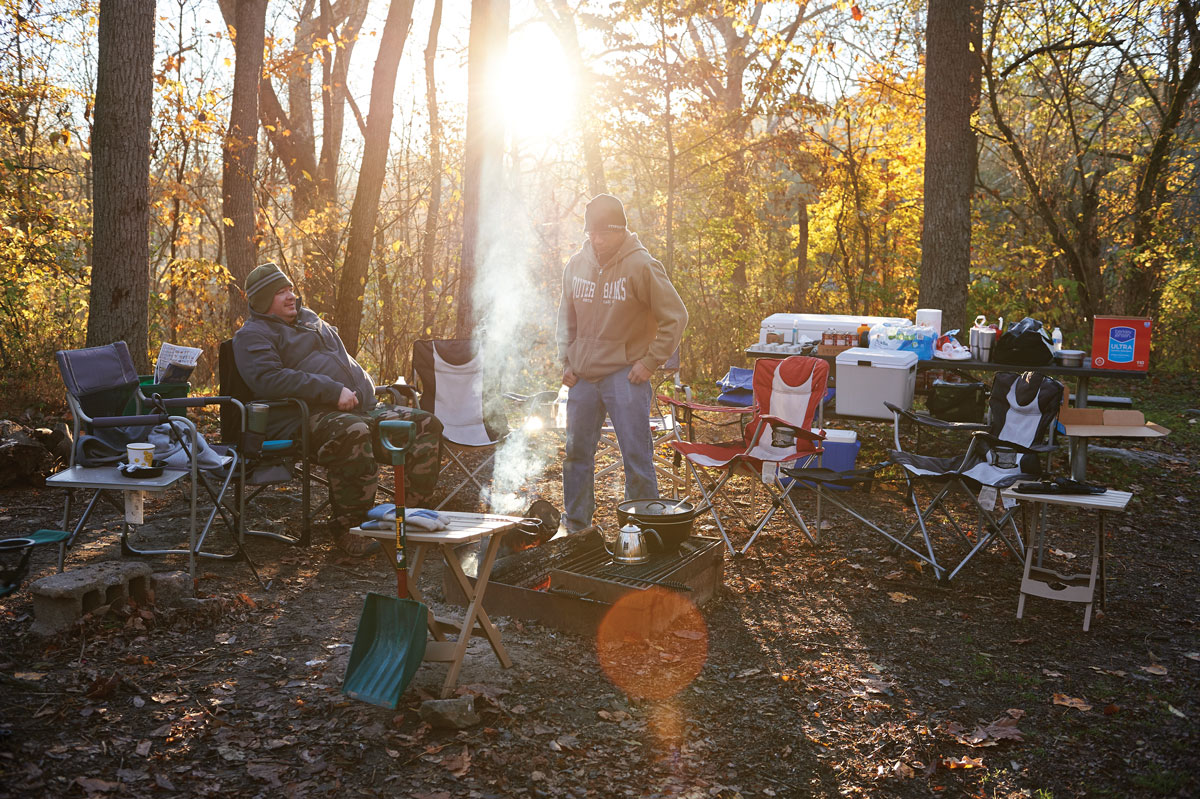
Mill Creek Camping Area, Lancaster County Central Park, was our destination for a weekend of camping. Left to right, Tim Mallinson and Kingston Chow.

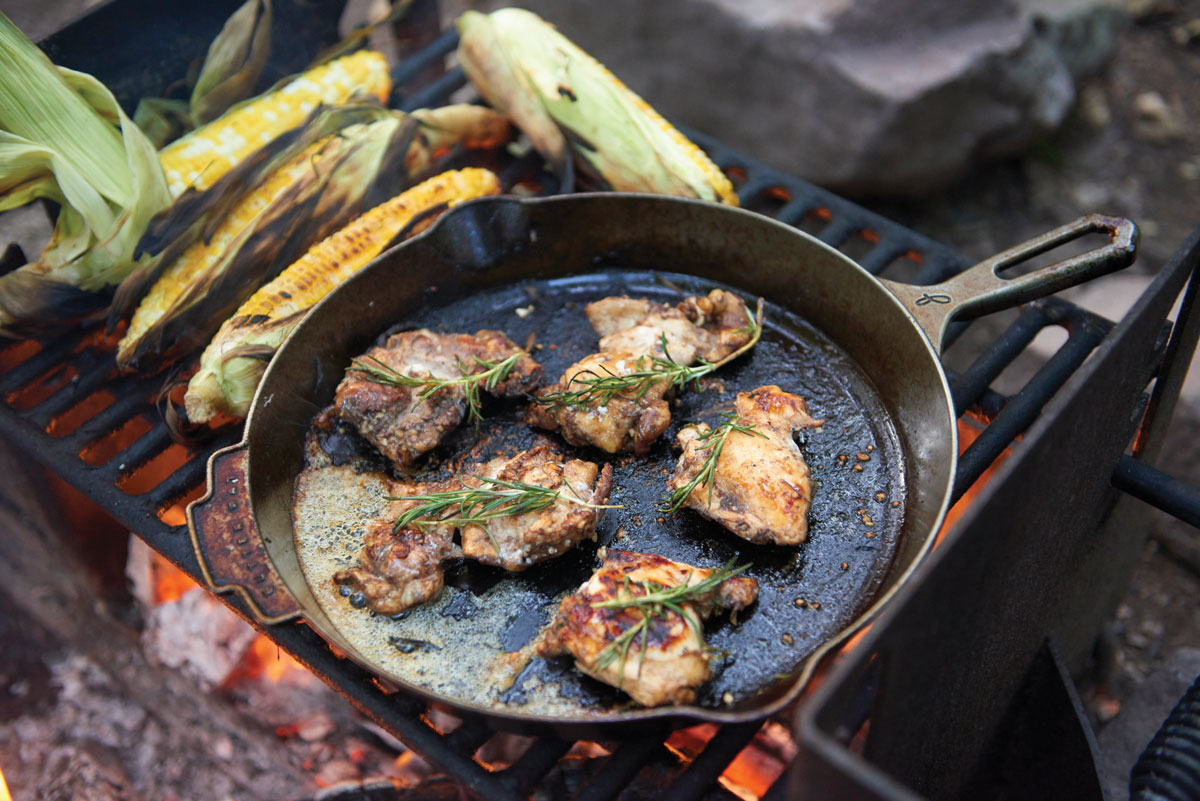
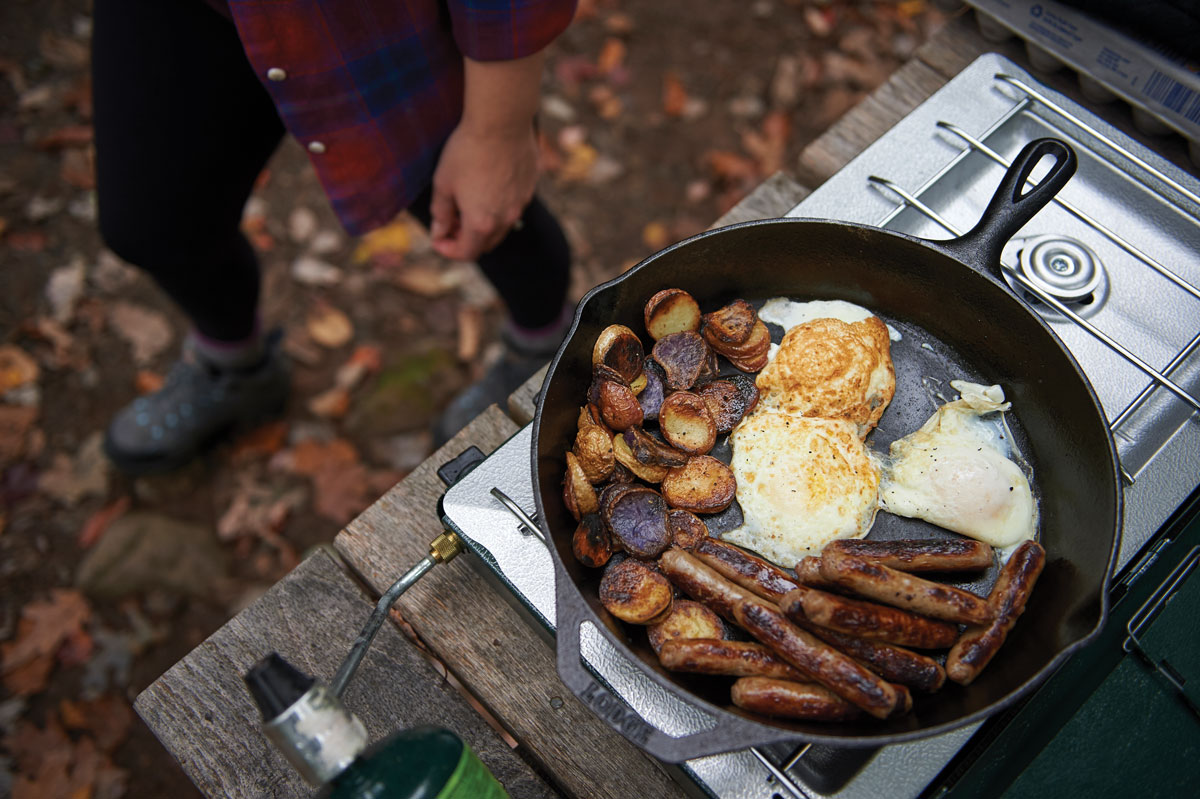

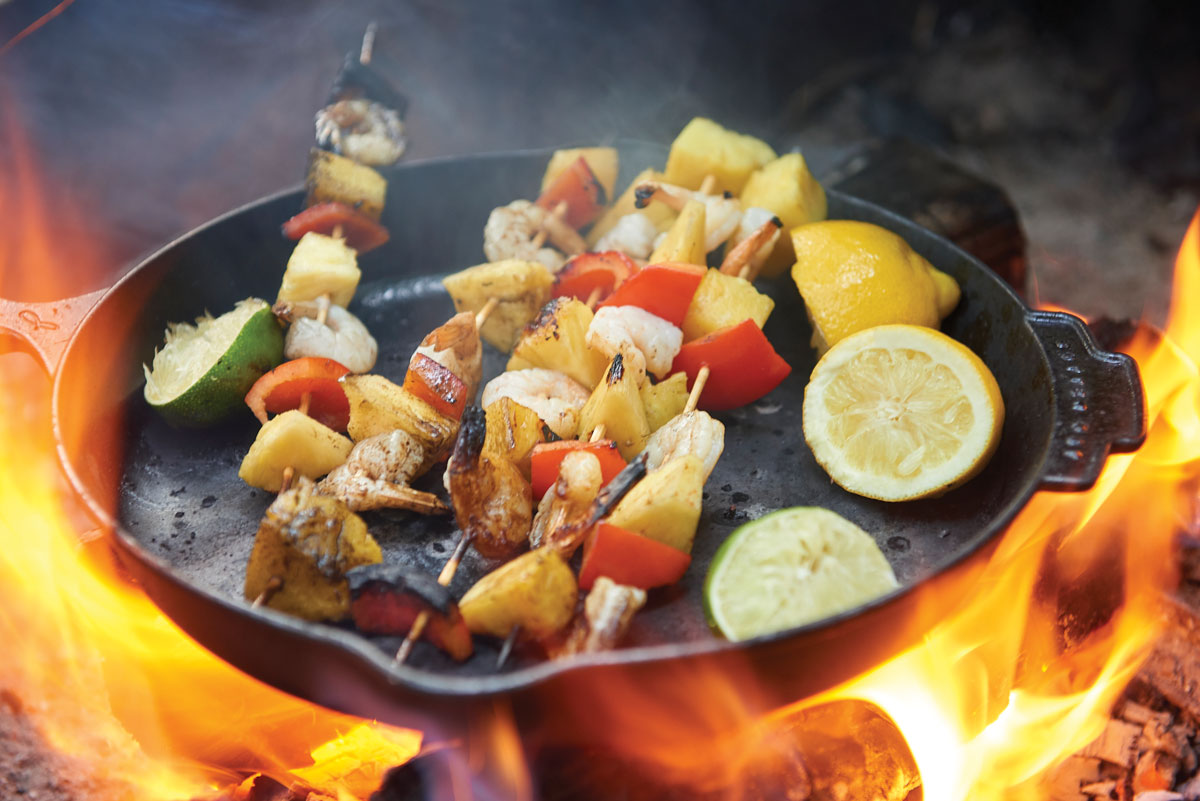
Leave a Reply